To many the Hasselblad Xpan is a legendary 35mm that offers a massive 65mmx24mm frame. But these days selling for over a grand you’ll not likely see me picking one. But turns out there is a lo-fi equivalent that actually shots not just wider but taller frames. And if it dies it wont be a 3-4 grand brick sitting on on you shelf. Meet the Lomography Sprocket Rocket.
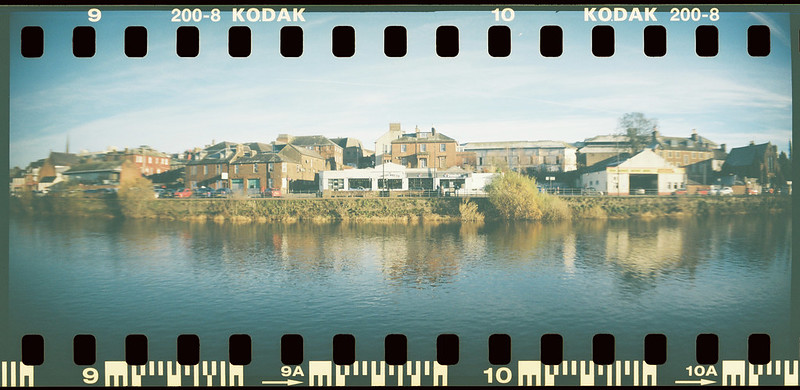
But the Xpan is a holy Grail camera. How can you compare this ?
To be fair one level I’m not.
The Xpan and the Xpan II were made in partnership with Fujifilm (their identical versions are TX-1 &TX-2). The cameras and history are detailed in Mike Eckman’s review
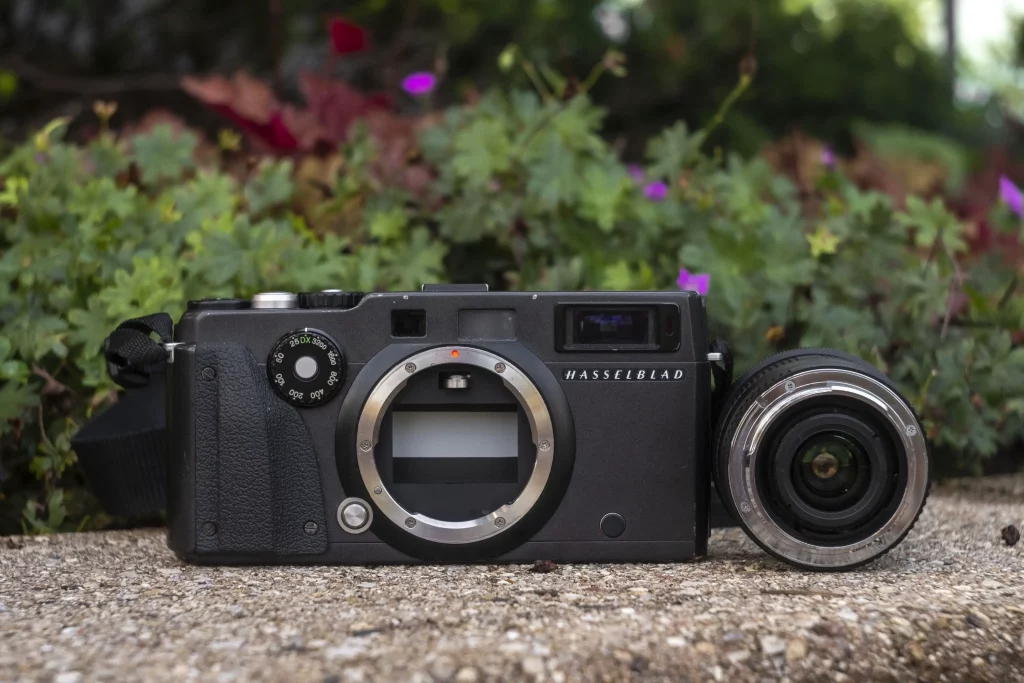
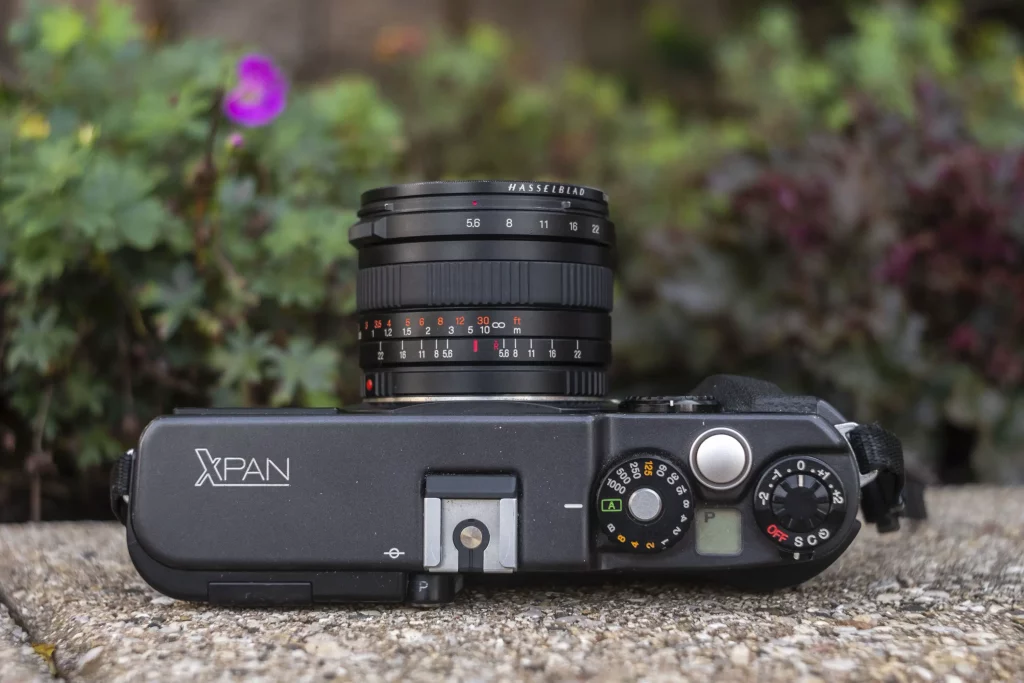
To some, these rangefinder are seen by some as the pinnacle of film camera engineering
“Looking at the body in hand, everything has been perfectly engineered to serve one unique purpose and vision. They made a double length metal shutter, used bespoke medium format lenses for maximum coverage and minimum distortion, and built a one of kind panoramic viewfinder. And because it was the XPan was to be a late-90s, best of the best sort of camera, they added every feature that technology allowed”
Matthias Jambon-Puillet , Casual Photophile
But it suffers the curse of many a late camera. Heavily reliant on specific electronic parts, if something fails you’re likely to have a very nice looking but expensive brick on you hands.
The Sprocket Rocket does not really try to ape that. But it is the Lo-fi equivalent. And if it goes toast it’s the price of a meal out.

You said wider frames ?
Yes it is.
The XPAN frame is 65x24mm (cf. to standard full frame 35mm 36x24mm). The Sprocket rocket offers you true twice full frame length at 72mm. It also as its name suggest gives you sprockets with a 33mm tall frame height. And If that look ain’t your thing slip in the removable mask to give sprocket free normal height shots (72x24mm)
Unlike the XPAN you have no standard frame option built in.
The camera has 30mm 1:10.8 lens with switchable F/10.8 and f/16 apertures and a choice on 1/100 (N) or Bulb (B). The camera is focusable with 2 zones 0.6-1m and 1m+ although you can set between (DoF makes this unnecessary though)
The shutter is self cocking and independent of the film’s movement so you can do easy multiples exposures whether intended or not.
The aperture and shutter controls are moved by moving a metal switch al la Diana camera between settings.
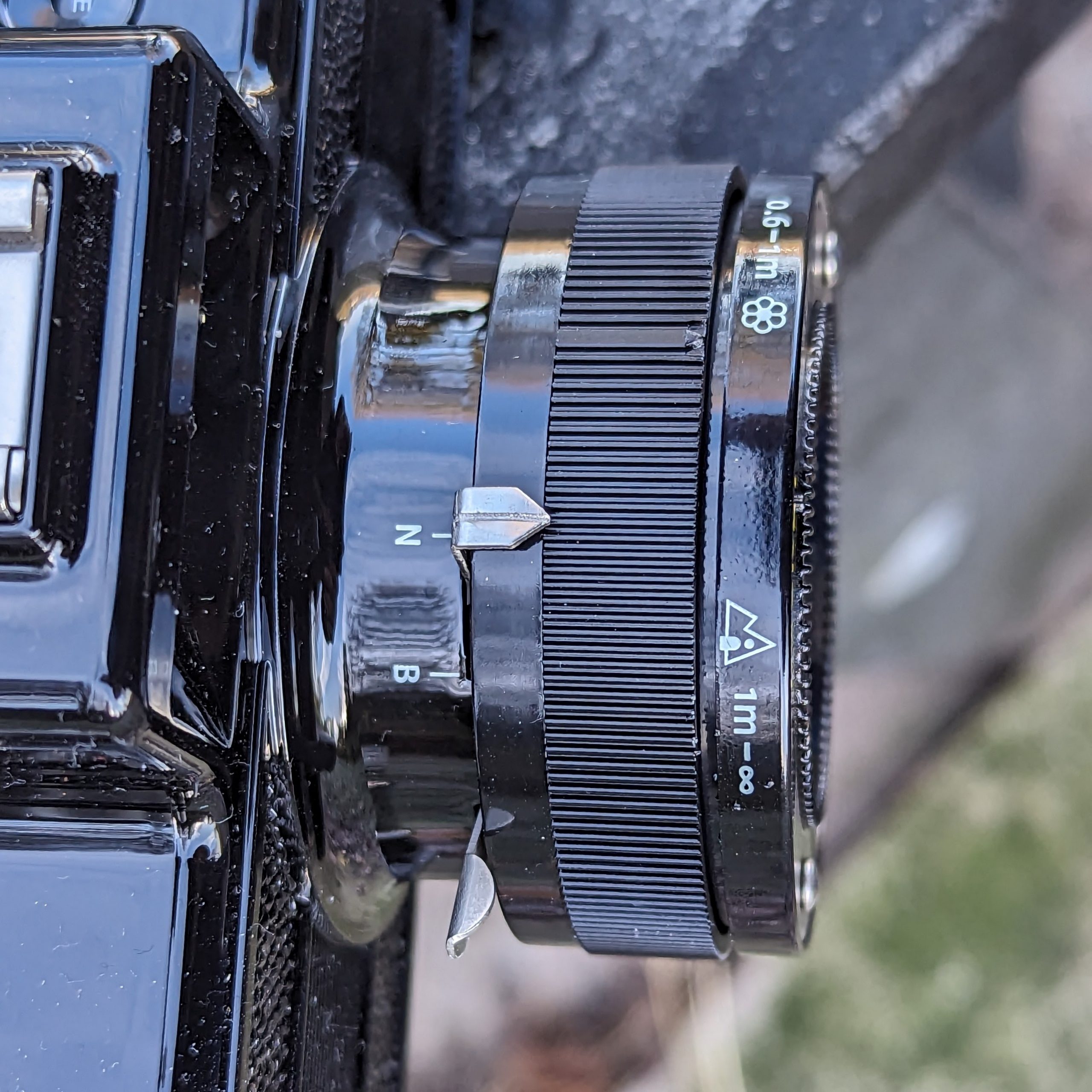
The camera is a rarity for Lomography’s lo-fi models in that it takes a standard hotshoe flash.
The Sprocket Rocket looks slightly familiar ?

Yes it does. It’s styled after some Bakelite cameras made in Chicago in the post war years. I am indebted to Eric Enrico Jason of Aperture Preview whose well crafted and researched review of the Acro Model R just so happened to feature one of these- the Herold “40” as a incidental feature.
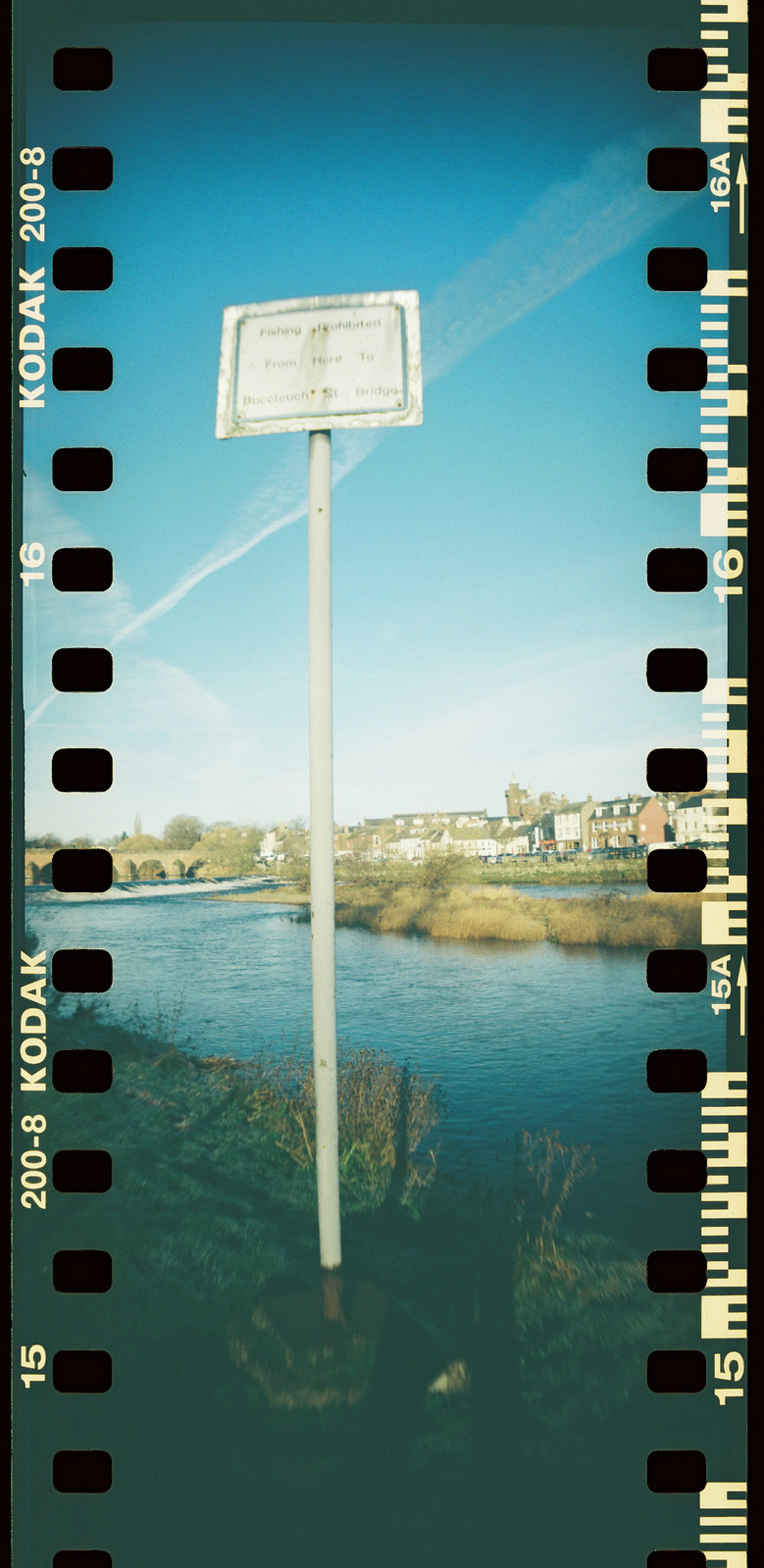
It is one of several cameras made by a few Chicago based manufactures (the so called “Chicago Cluster“. All had a fixed focus lens and took 127 roll film. Ironically many are half frame. The Herold “40” is one of numerous similar bodied ones known as McKeown Code B by collectors.
So a lot of plastic then ?
Yup
The on on sale at the moment is technically the 1.0 version. There were more colourful so called Sprocket Rocket 2.0 models but as PC Mag noted the difference was only cosmetic.
But for now you have to do with the black version.
How easy is the Sprocket Rocket to use ?
Relatively easy. It has a typical slot on the take up spool set up. But before you looad you must manually move the sprocket over the film gate until a white dot appears in the window beside the film counter.
Load your film and close the rear door. This is held on by just 2 clips !! But these never failed when I was using and other reviewers describe it as more stable than a Holga in that regard.
You wind on until the white dot re-appears. If you overshoot when winding it doesn’t matter. You can easily rewind using the second rewind knob as there is no rewind lock.
Frame and take your shot.
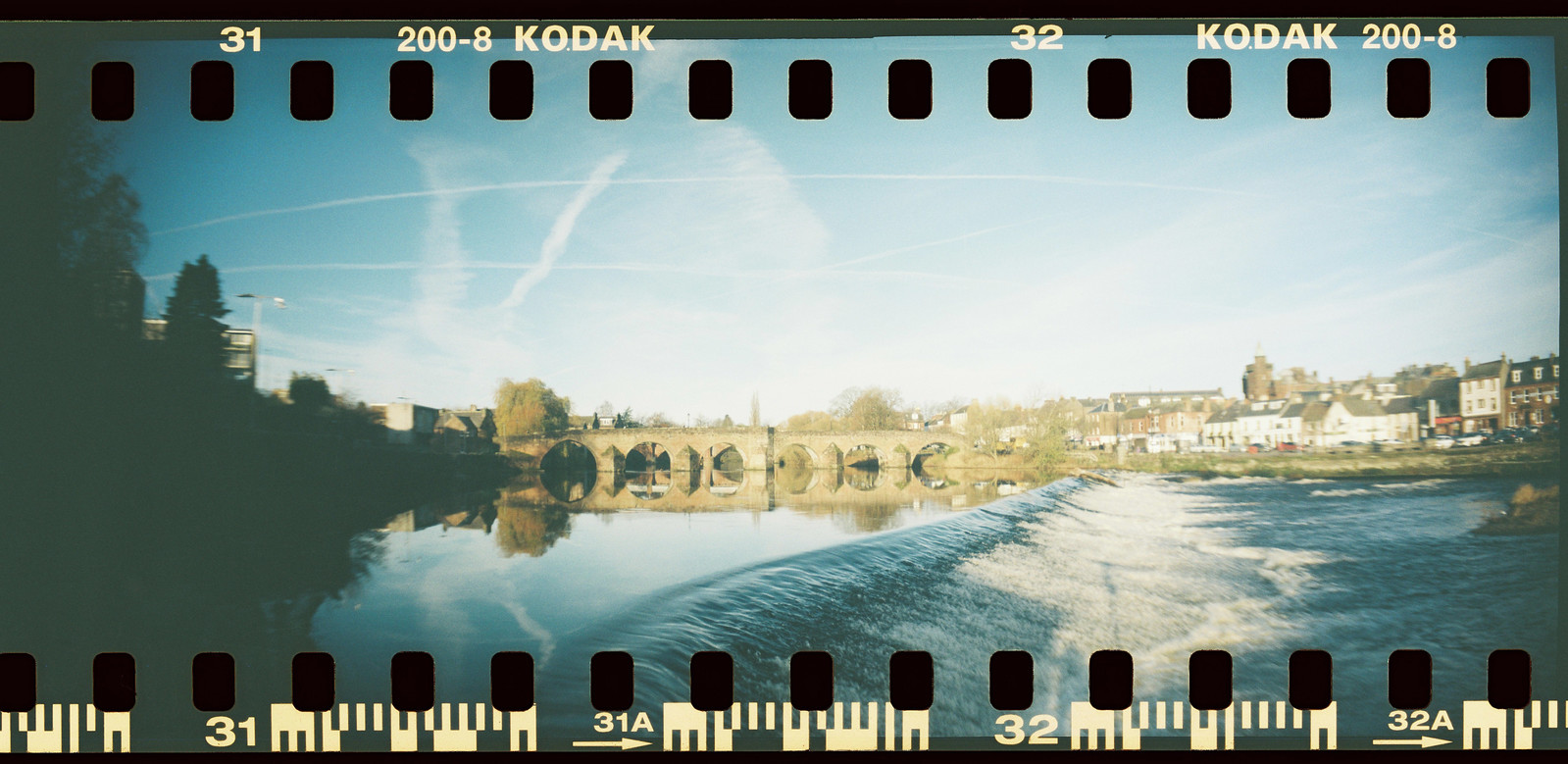
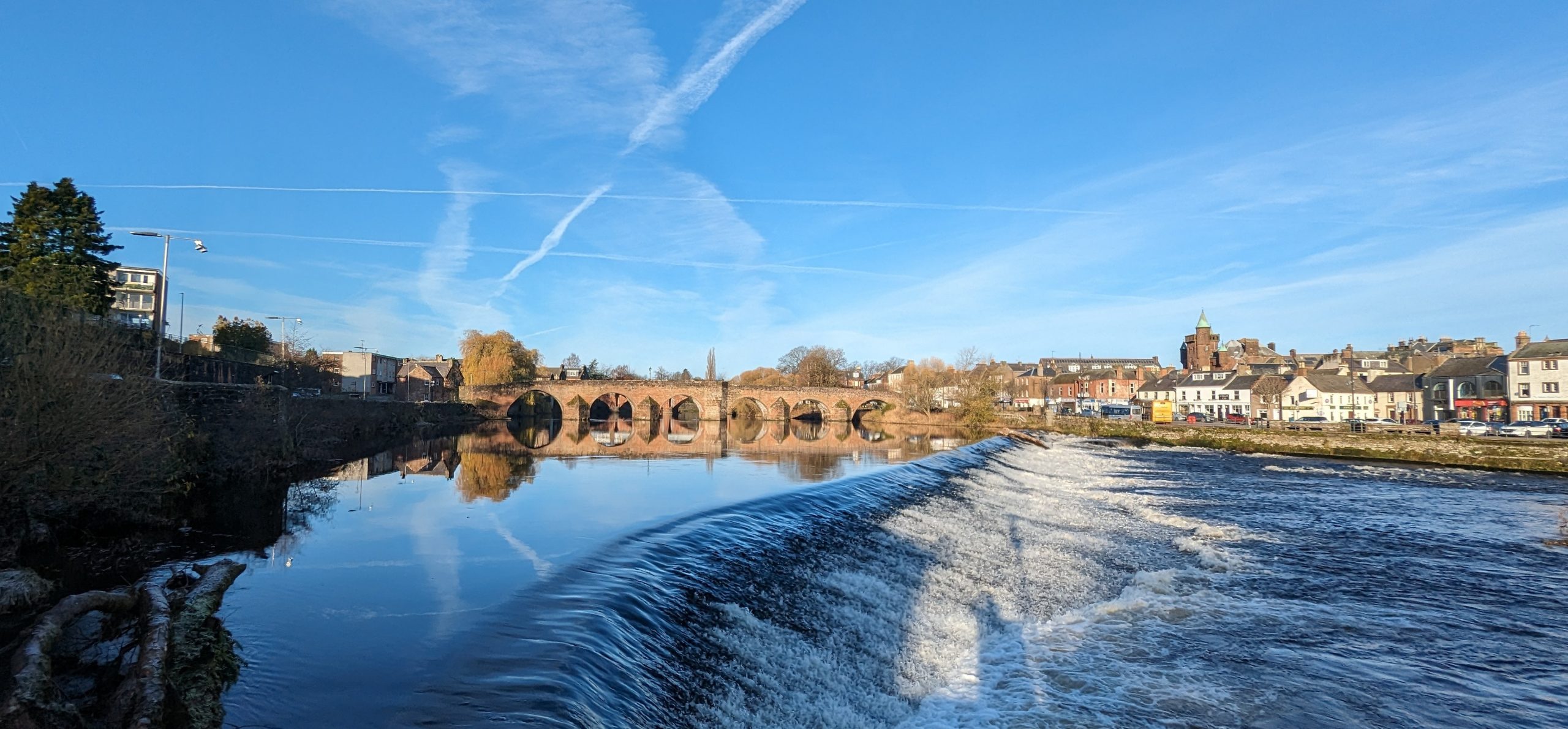
Setting are altered by the Diana-esque metal switches on the lens barrel. There is a a focus ring but only 2 zone settings as mentioned earlier. It is only subtly marked (a bit of white paint would not have gone amiss).

And Lab costs ?
If you self scan and don’t use an auto feeder scan then there should be no cost beyond the less shots per roll. But should you lab scan expect a hand scan surcharge at the least. For example Photo Hippo charged me an extra £7 and analogue wonderland will charge you a tenner more for this service.
Results
In some ways the image I Posted at the head of this post tells you all you need to know

Centrally it’s reasonably sharp for a plastic lens as this crop shows (Note I’ve drop the original 27MP scan to just 10002 pixels)
But it falls off rapidly to the sides. The focusable ability is important as it does make a difference for those close shots. But this is a camera that demands to be used for panos. The obsessives amongst you can try playing by setting the focus between the 2 zone points. But the focal length and depth of field work well here.
I can also assure you the banking on the river Nith does not curve convexly at that point (more concave). The Barrel distortion is quite marked with this camera
The lens definitely adds some retro vibe to colours one of the most common consumer films used.
Flare is an issue with this camera so be aware and you get some vignetting
Interesting this a camera that on my just 2 roll experience seems to break the “everything looks better in B&W”. I loaded it with fairly fresh XP2 which is one of the most tolerant films out there but in some ways the B&W heightened the issues
The sprocket images are more wow than the ones with the mask IMHO
Final Thoughts on the Lomography Sprocket Rocket
I enjoyed this. It is a fun camera to use with a nice retro style. It is serious Lo-Fi despite a few features and you shouldn’t compare it to XPan images like this one from Photothinking’s review of the legendary Hasselblad
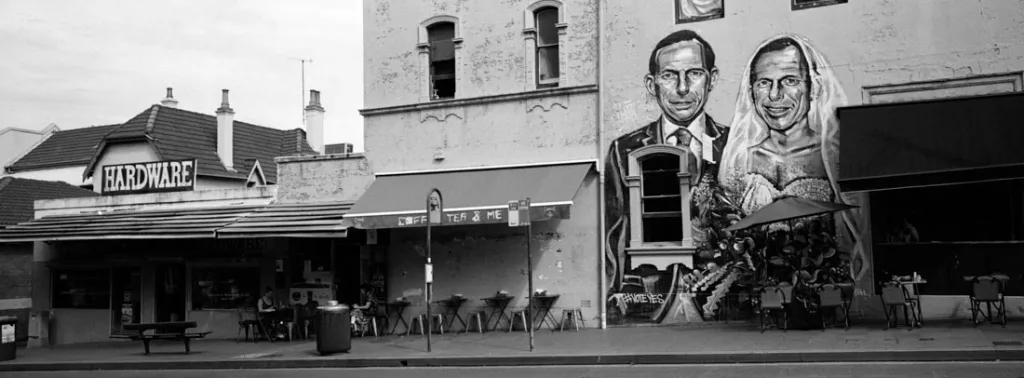
You also need to be aware of the cost of processing and film. It’s aplastic fantastic and has limited exposure controls.
But there is nothing quite like it for a lo-Fi shooter. Granted you can buy its 360° stablemate (see below) but this is more practical
Other Reviews/Info
Lomography has a pile of photos taken with the Sprocket for your perusal. A widely reviewed camera in addition to the PC Mag review, you can find reviews at Kosmo Foto, 35mmc, Matt loves Cameras and Emulsive for starters.
Alternatives
For a Niche market there actually are alternatives. The most obvious is Lomography spinner 360° which offers 360° views covering little over 4 frames (8 shots per 36 Exp roll). It uses a rip cord driven motorised system to turn.
You can also get the wide sprocket effect using 35mm film in a roll film camera. Lomography even make a back to do this easily in their Diana cameras. But in fact you can do with out that with a couple of 35mm to 120 adaptor pins, so lighttight electrical tape (to black the film windows) and darkroom or darkroom bag for unloading. The ubiquitous Holga and Diana (both vintage and F+) are good choices for this. And a box cameras like the Kodak Brownie No 2 allows for up to 82mm of sprocket fun.
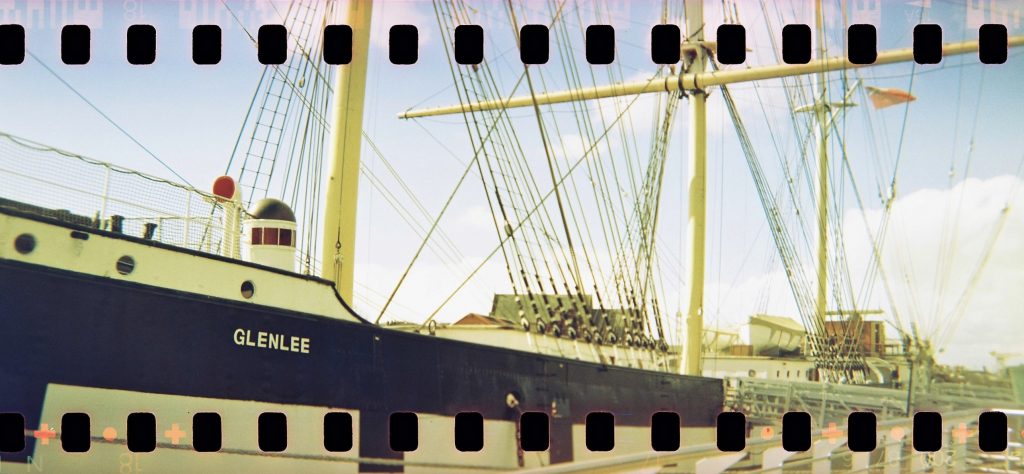
There are also a legion of faux panorama format (use a standard 35mm frame width but cropped to give a ~36x13mm frame. First seen with the Kodak Stretch disposable, the format ended up in everything from lo-fi cult like the Halina Panorama to SLR & high end compacts like the Nikon Ti models.
The Lo-Fi end like the Halina does give a cheaper way to rival the pano shots but at the cost of a much smaller negative (around a 6th of the area of the sprocket) and no sprockets
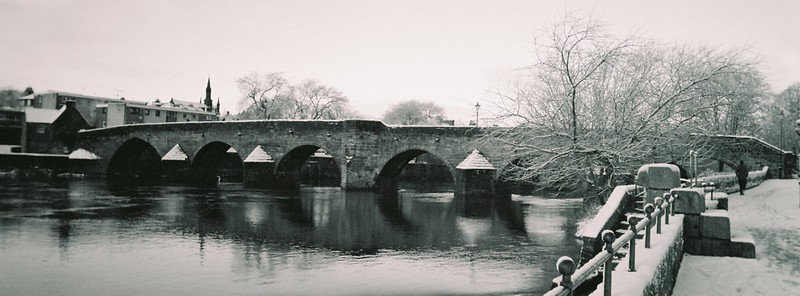
-And for a budget XPan ?
The latter more posh versions are a rival to the Hasselblad as I’ve explored before. These can switch between full and cropped frame. Some like my Pentax MZ-5 SLR can do mid roll.

Going more serious high end is the Horizon Perfekt or Kompakt . The former is a rarity in that this is an in production camera from a historic major manufacturer (KMZ in Russia). It is a rotating lens camera like the spinner but uses a motor. Designed for architectural Panoramas this has been around in various guises since the 1950’s with prototypes appearing in 1948.
Oh and there’s that thing called an Xpan.


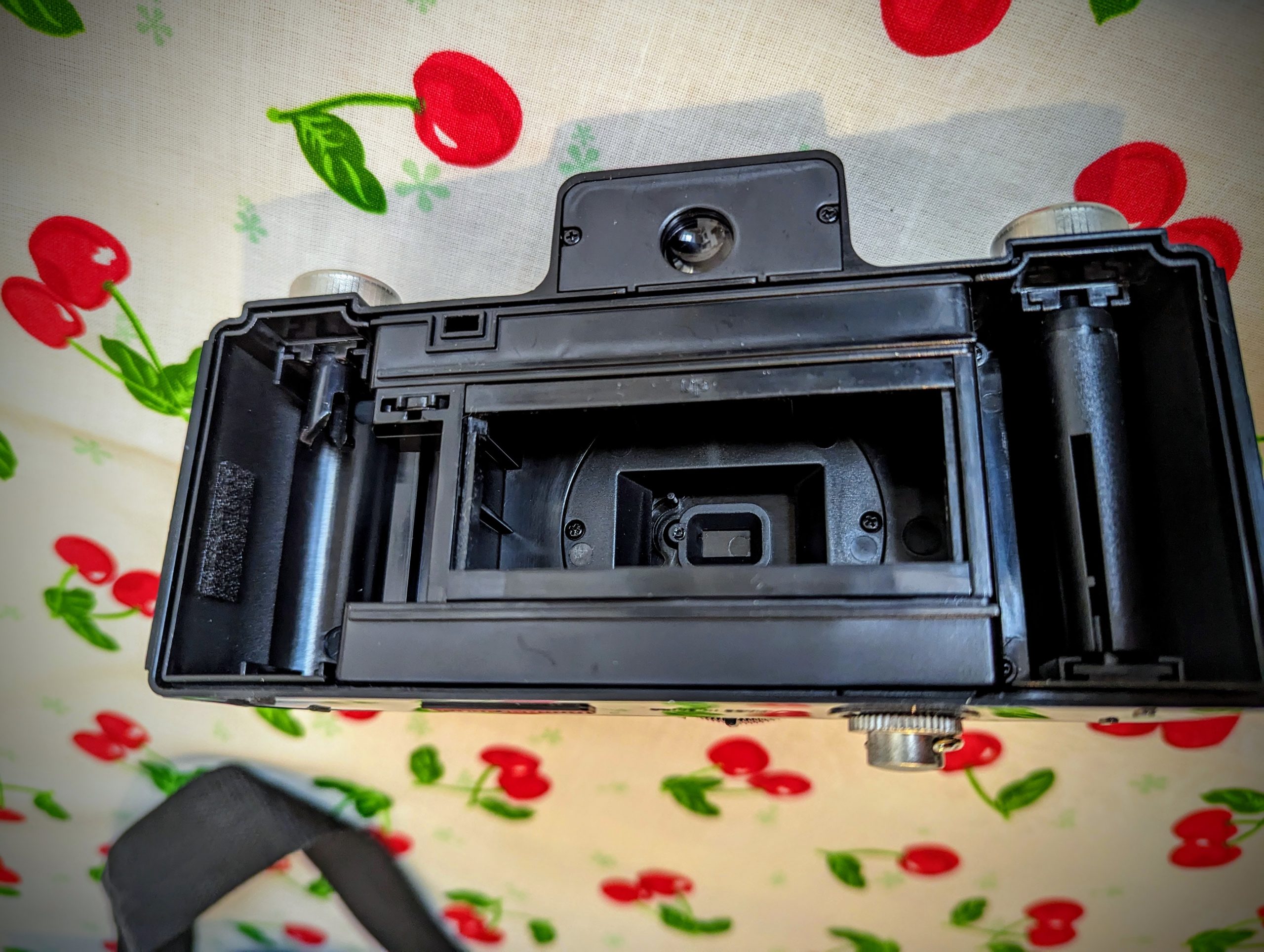
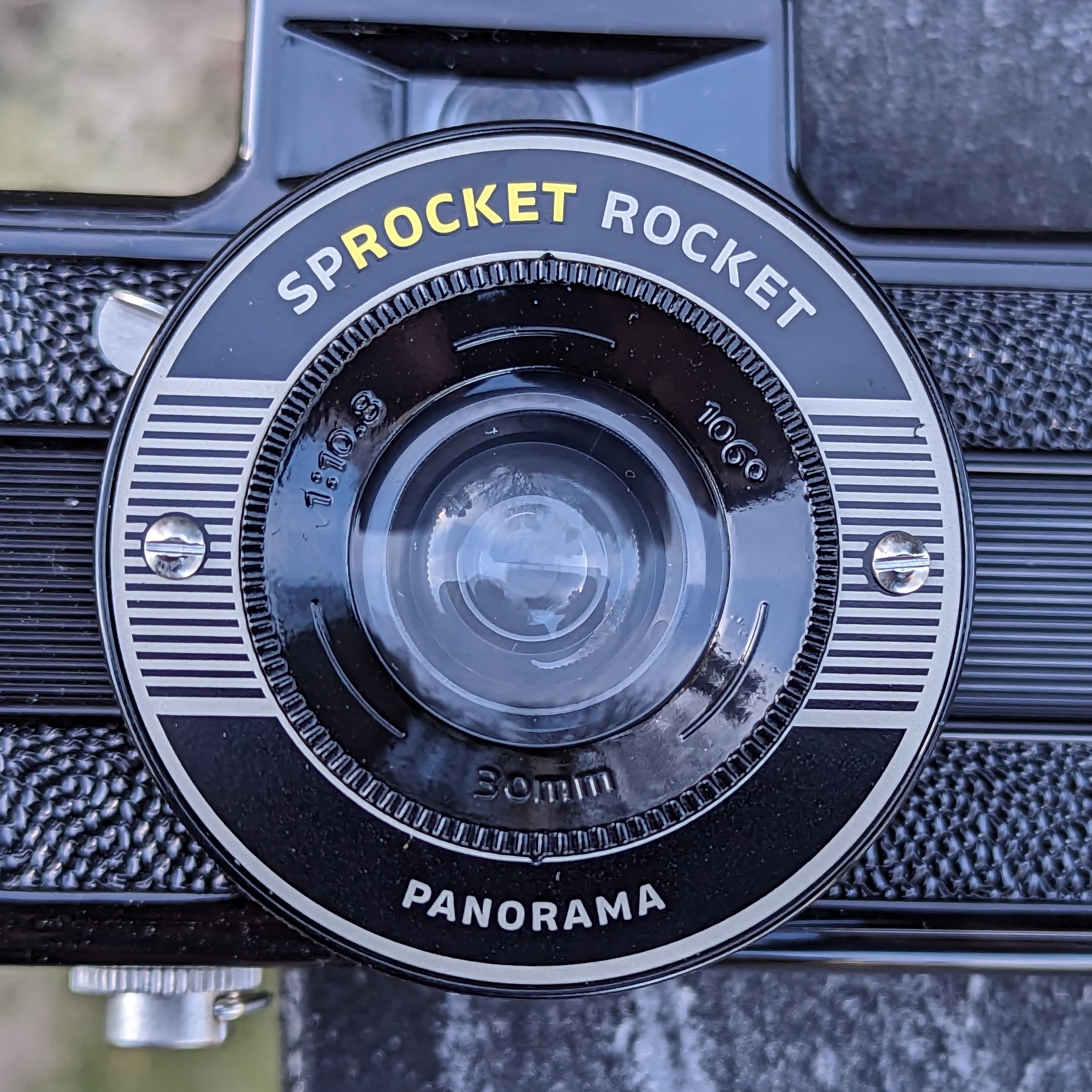
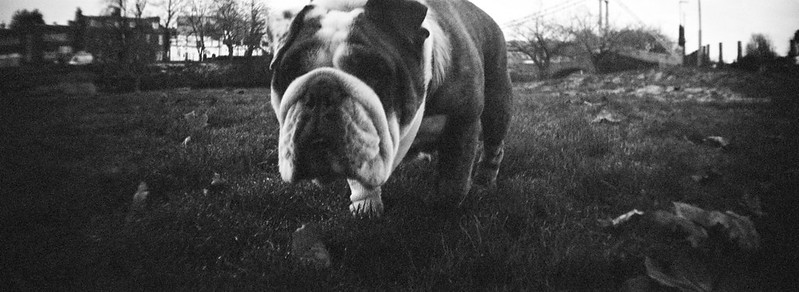



One thought on “The lomographer’s XPan – Lomography Sprocket Rocket Review”